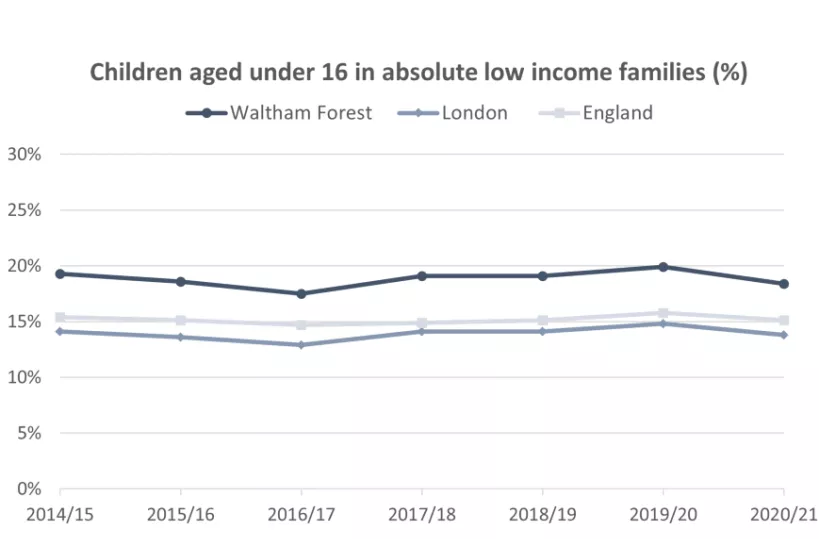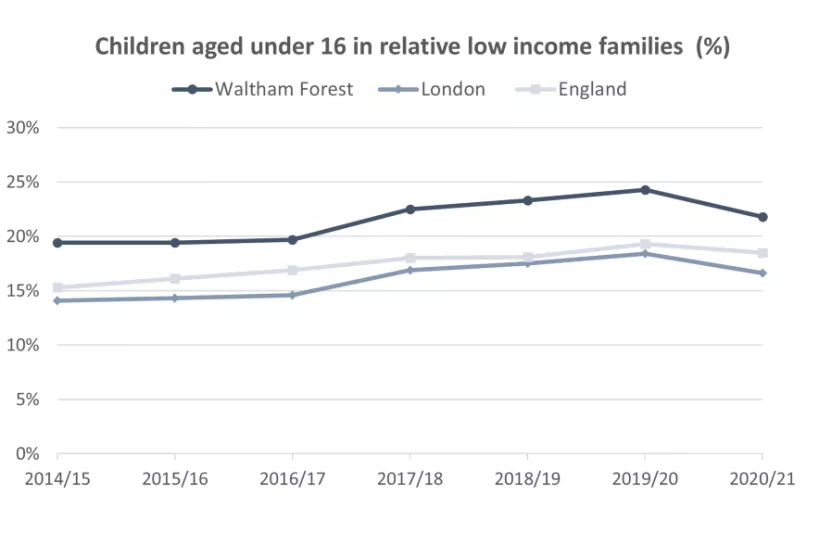Last updated: 20 November 2024
Next review: 20 November 2025
This content is part of the Waltham Forest JSNA. To see other JSNA content, visit the JSNA landing page
There is evidence that childhood poverty leads to premature mortality and poor health outcomes for adults. There is also a wide variety of evidence to show that children who live in poverty are exposed to a range of risks that can have a serious impact on their mental health. Reducing the numbers of children who experience poverty should not only lead to immediate or short-term impacts on the lives and experiences of children, but also improve adult health outcomes and increase healthy life expectancy in the longer term.
There are two ways to define child poverty: absolute and relative. According to the Child Poverty Act, a child is considered to live in relative poverty if they live in a household with an income that is less than 60% of the national median income [1]. By contrast, absolute poverty measures the number of children living in households with incomes 60% below the average in 2010 to 2011, adjusted for inflation, and as such reflect the poorest households in society.
Between 2015 to 2016 and 2019 to 2020, the difference in the number of children living in relative and absolute low-income families increased. This was due to a growing number of children in relative low-income families, while the number of children in absolute low-income families remained stable.
In 2020 to 2021, there was a decline in the number of children living in both relative and absolute low-income families. Compared to other north east London boroughs, Waltham Forest has one of the highest proportions of children living in both relative and absolute low-income families.
In 2020 to 2021, 11,201 children under the age of 16 were living in absolute low-income families in Waltham Forest, equivalent to 18.4% of children. This is higher than both the London (13.8%) and England average (15.1%).

Source: OHID Public Health Outcomes Framework. Data from The Office for Health Improvement and Disparities. Date accessed: 24 March2023.
The number of children living in relatively low-income families in 2020 to 2021 was slightly higher at 13,295 (21.8%), a difference of 2,094 children. This is also higher than the London (16.6%) and England average (18.5%).

Source: OHID Public Health Outcomes Framework. Data from The Office for Health Improvement and Disparities. Date accessed: 24 March 2023.
References:
[1] Child Poverty Act 2010. Data accessed: 04 May 2023